Orobanche corymbosa (Flat-topped Broom-rape) - photos and description
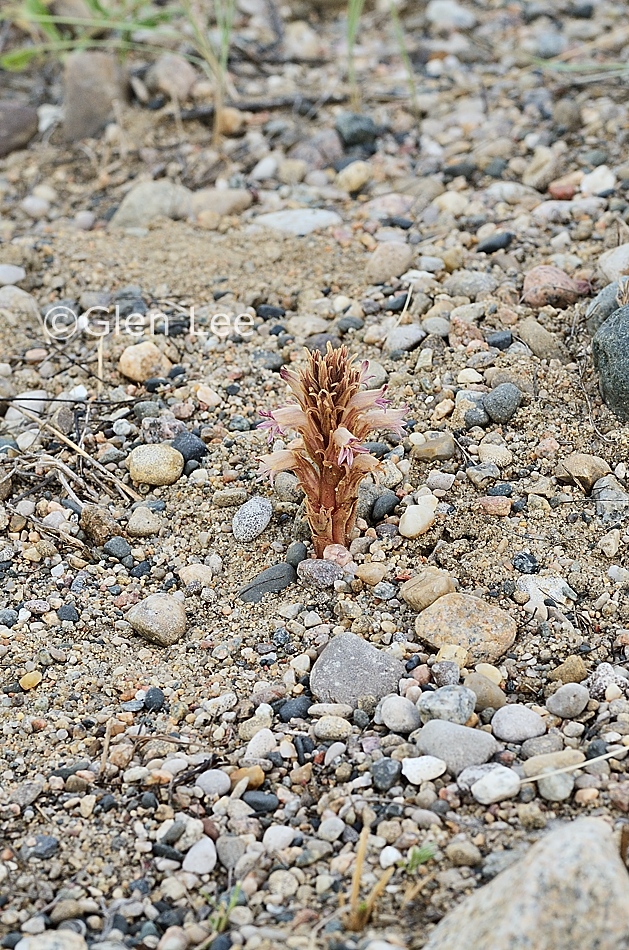
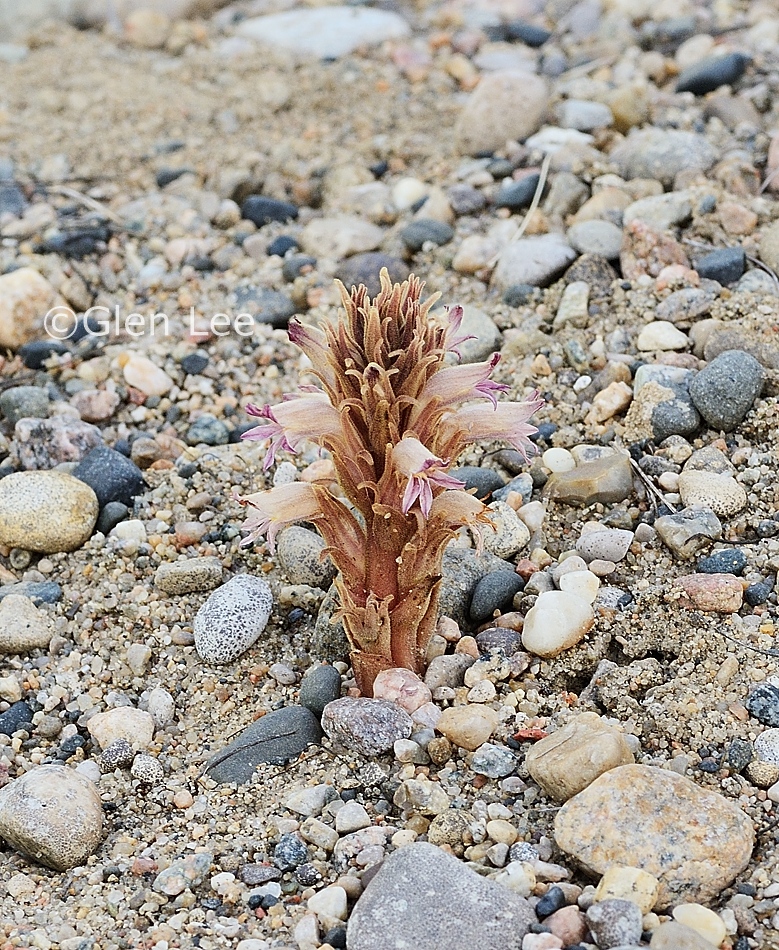
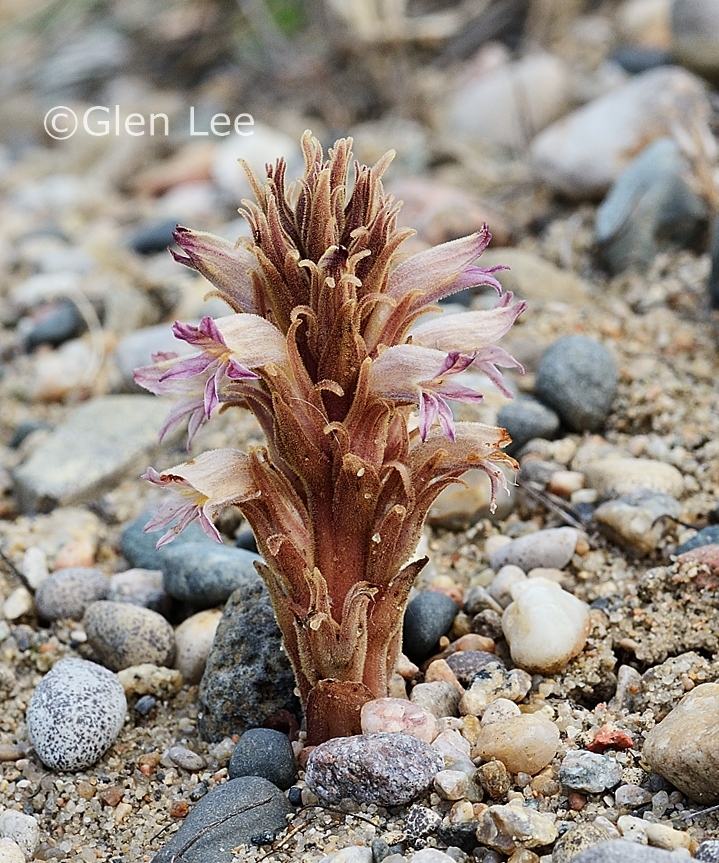
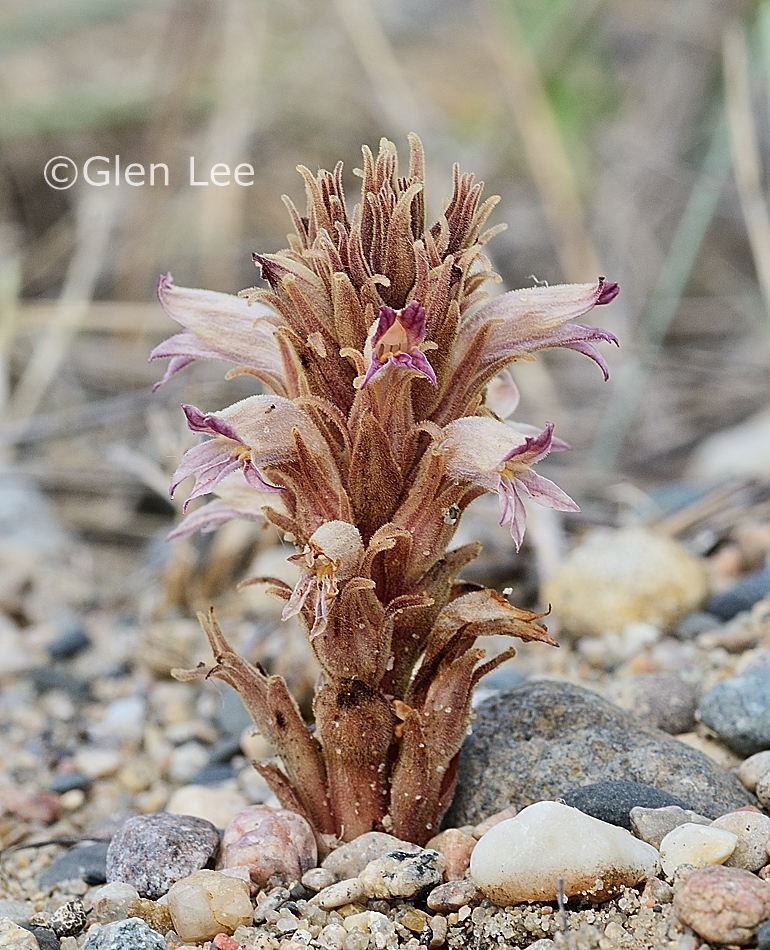
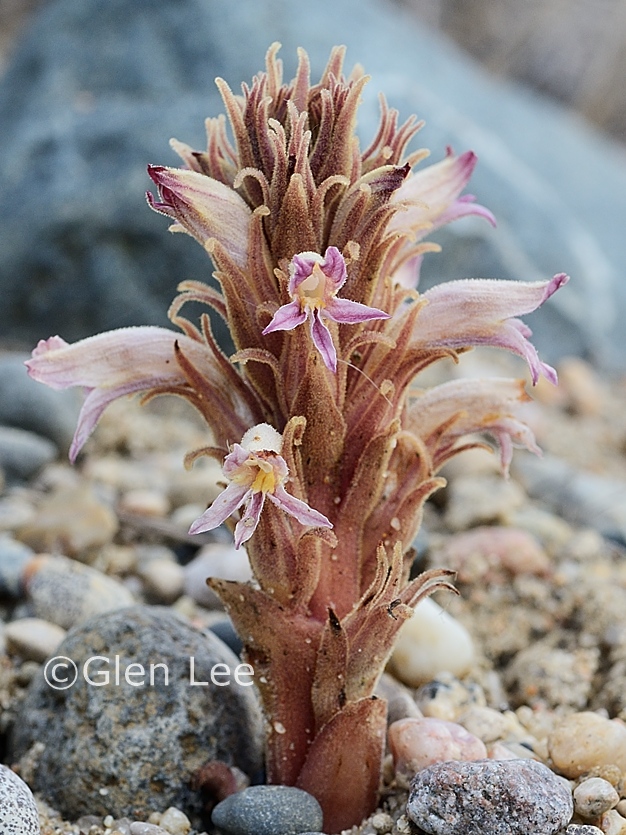
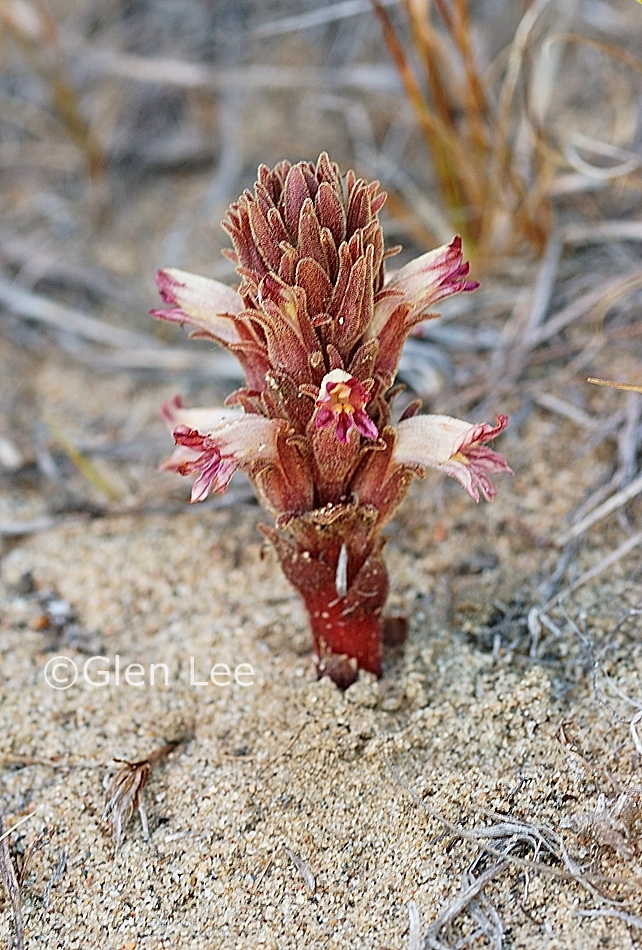
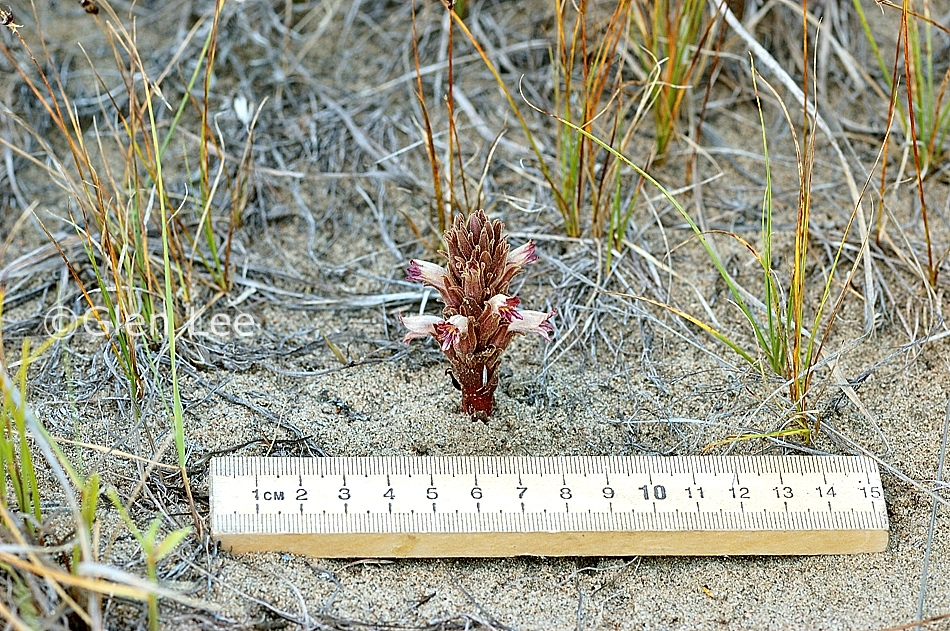
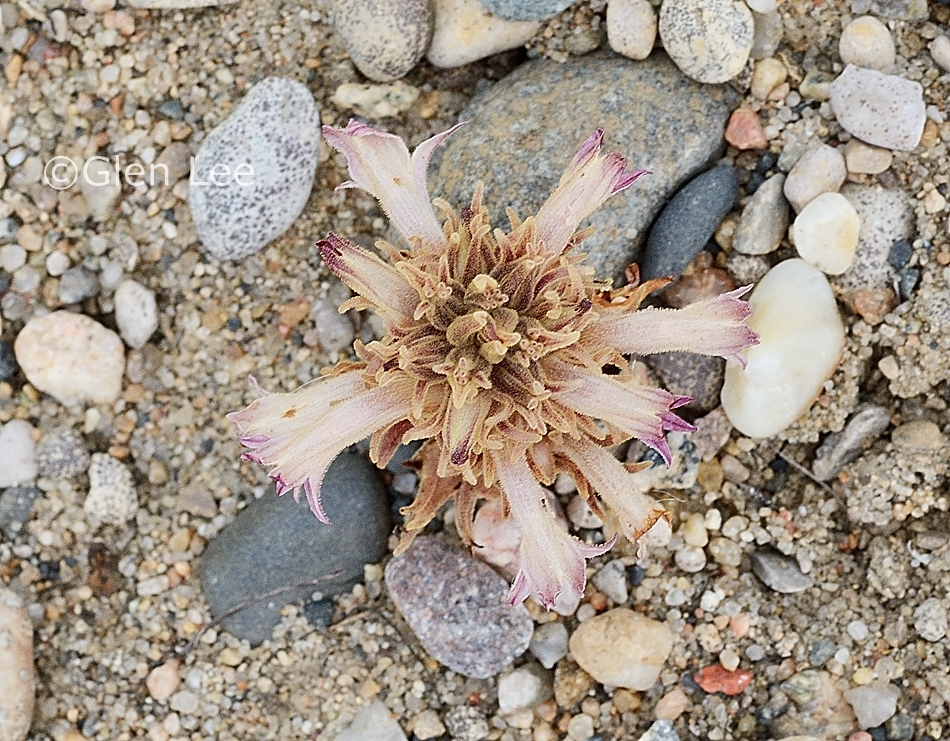
Looking straight down on plant.
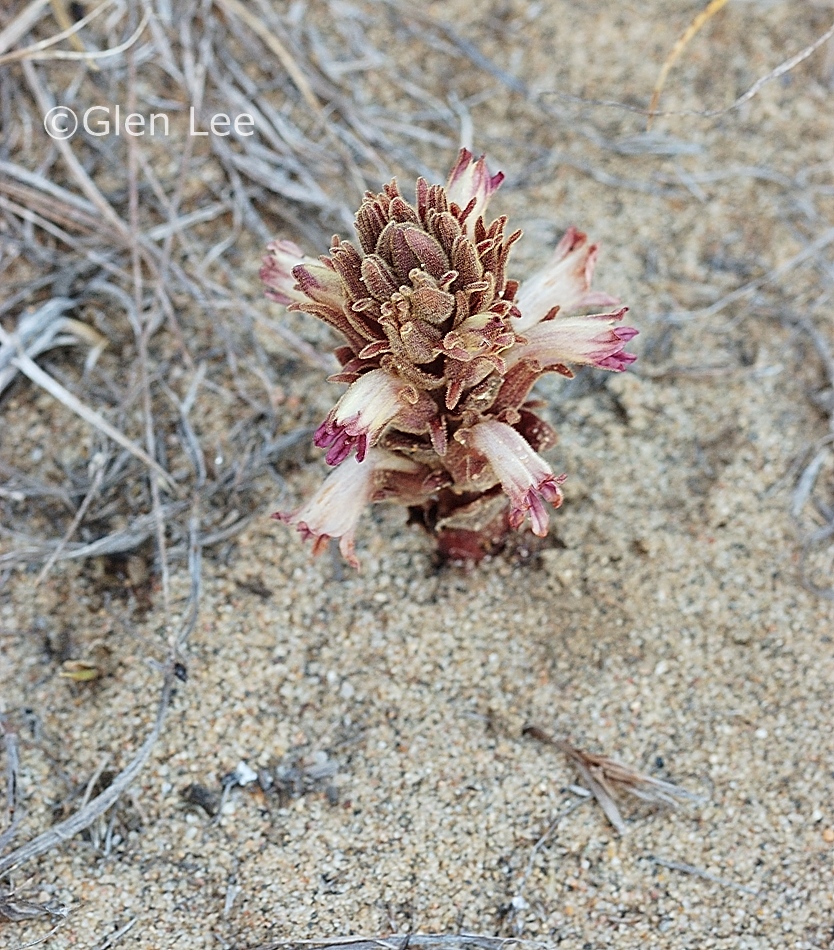

Flowers have bracts beneath the sepals
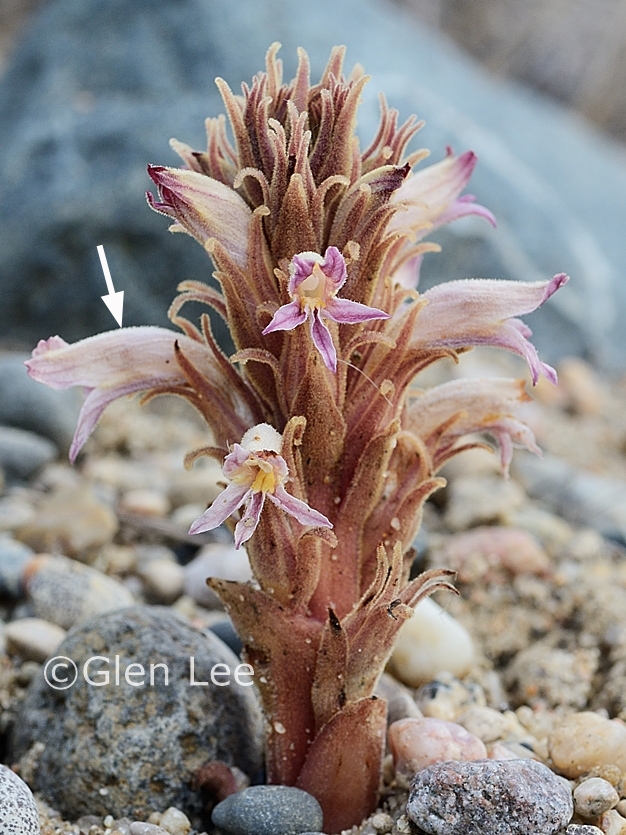
Oldest flowers strongly arched
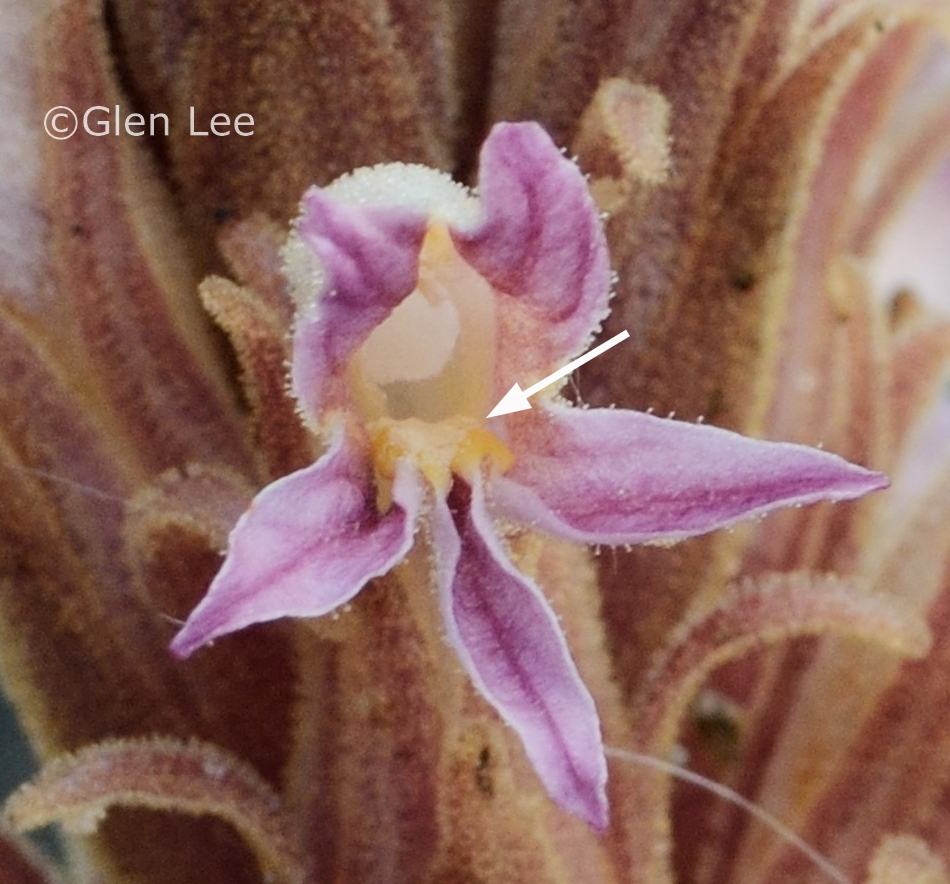
Yellow palatal fold is glabrous (note: other parts of the corolla
tube are glandular hairy)
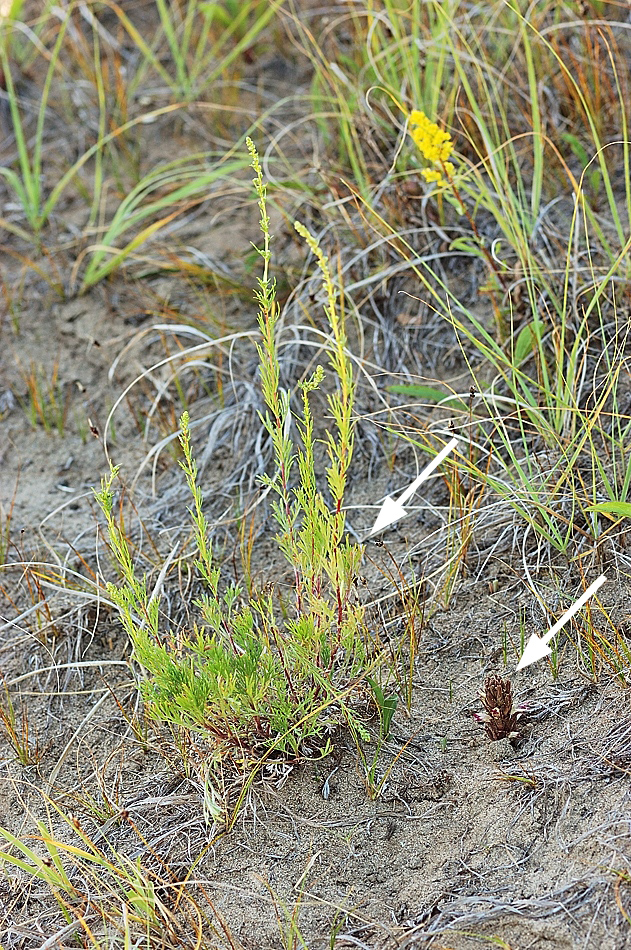
Orobanche corymbosa parasitic upon Artemisia campestris in above
photo.
Origin: Native.
General: Single-stemmed, thick, parasitic plants, with reddish-brown foliage. Plants pubescent with glandular hairs. Parasitic on the roots of other plants, typically species of Artemesia campestris.
Flowers: Flowers many, sessile in a dense spike, white-pink with purple tips, tubular shape. The flowers strongly arched. The yellow palatal folds are glabrous (this is the growth on the lower side of the throat of the corolla tube). We measured flowers to 15 mm long.
Leaves: Scale-like, ovate, 1 cm long.
Height: Height listed in Budd's Flora to 25 cm(!), we've measured plants to 6 cm tall.
Habitat: Sandy grassland.
Abundance: Unknown. It was determined the plant was found in Saskatchewan in 2021. Is unranked by the SKCDC.
Similar species: Could be mistaken for, Orobanche fasciculata. That plant has flowers on naked stalks, and no bracts beneath the calyx.
This species is very, very similar to Orobanche ludoviciana. To differentiate between the two species:
1. Examine plants when in full flower. Examine the
throat of the tubular flowers where you will find yellow folds (palatal
folds) on the lower side of the throat of the flower. If the yellow
palatal folds are glabrous = O. corymbosa; if the yellow
palatal folds are pubescent = O. ludoviciana,
2. The flowers of O. corymbosa have a
corolla tube that is strongly arched (hump backed), the flowers of
O. ludoviciana have a corolla tube that is only lightly arched.
This can helpful if the flowers are spent.
3. The corollas of the flowers of O. corymbosa are considerably longer (18-34 mm) than O. ludoviciana (14-20 mm). Could be helpful as well if the flowers are spent.
For more information, visit the FNA website for the key for genus Orobanche, and species descriptions: Flora of North America key for Orobanche species.
Thank you to Dr. Turner Collins for identifying the plants in my photos as Orobanche corymbosa.
When and where photographed: Photos taken in July 8th, Douglas Provincial Park, about 200 km west of Regina, SK, and July 27th, gravel pit on the slopes of the Qu'Appelle Valley, about 150 km east of our home in Regina, SK.